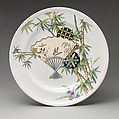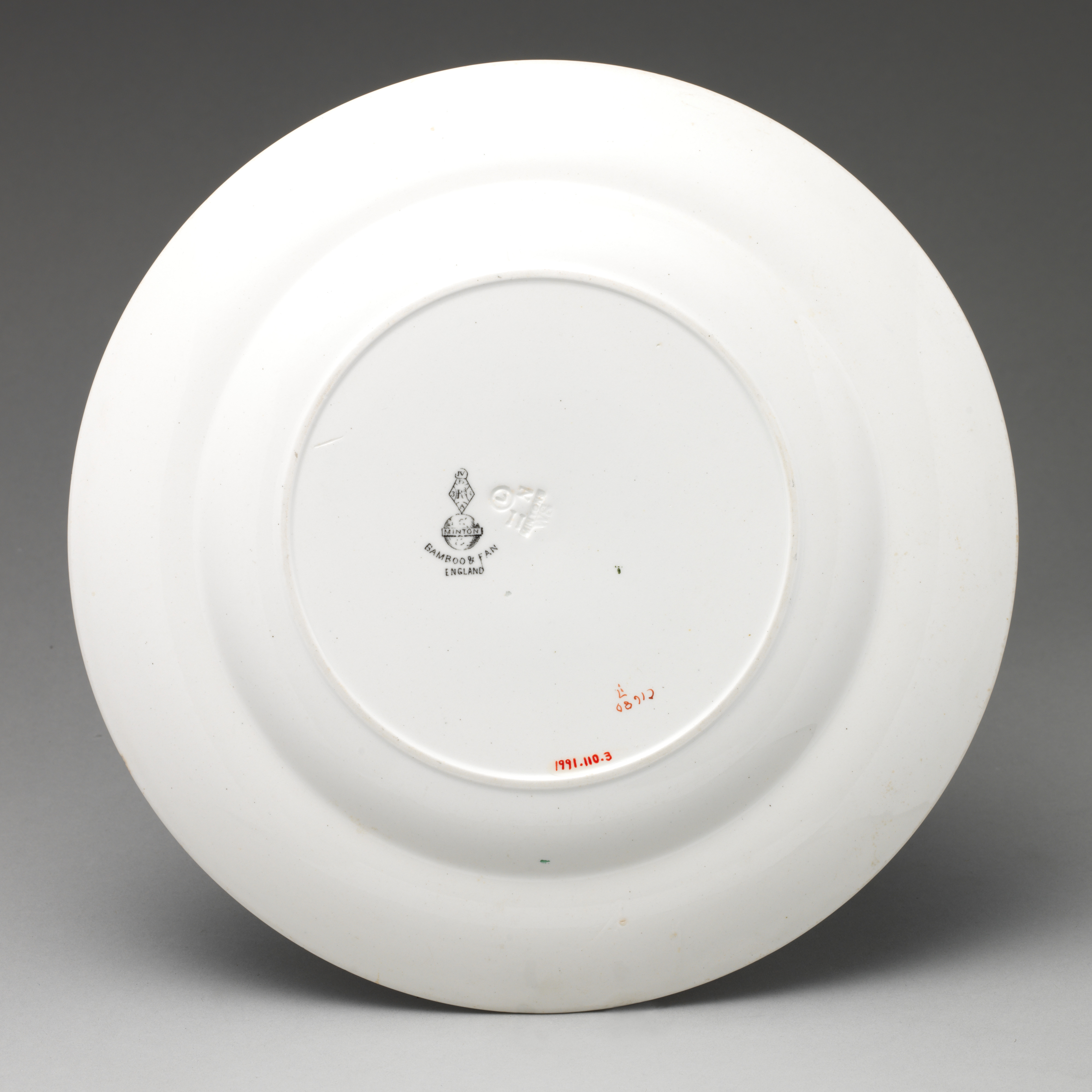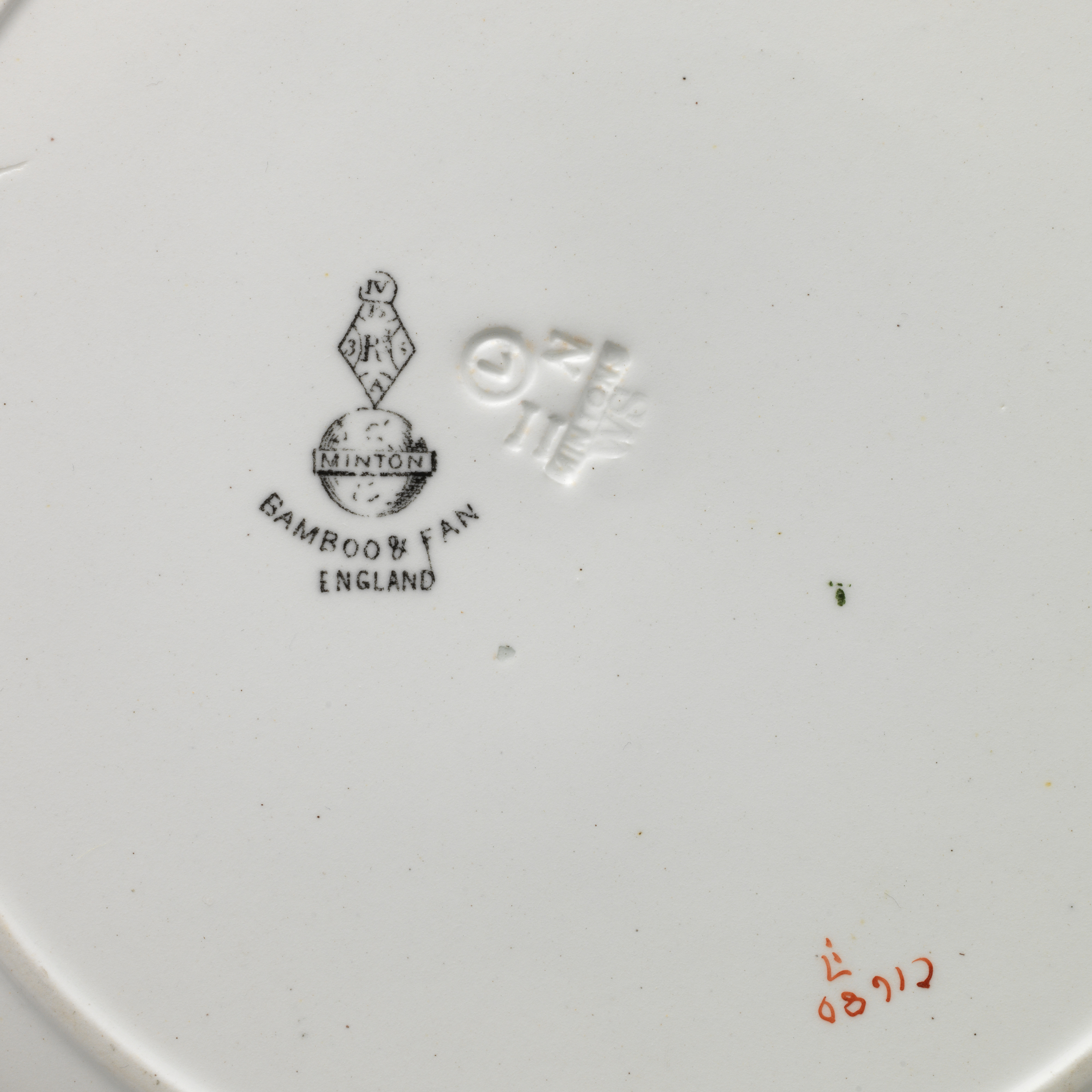Plate with "Bamboo and Fan" pattern
Factory Minton(s) British
Not on view
Typical of the Aesthetic movement, the asymmetrically placed orientation of the fan, the Japanese mon devices, and the bamboo reflect the popularity of Japanese motifs in Europe during the third quarter of the nineteenth century. However, iconic images associated with the movement, such as paper fans, bamboo, sunflowers, and peacocks, were applied to all forms of domestic objects at varying economic levels. The transfer-decorated pattern on this plate, which was later individually hand-colored in varying color schemes, allowed for rapid production of high volumes of merchandise.
The Minton Ceramic Factory was founded in 1793 at Stoke-on-Trent in Staffordshire and in its early years copied the ceramics made at Derby. In the mid-nineteenth century and under new artistic direction, the company became one of England's leading ceramic manufacturers, creating masterpieces in a wide range of popular revival styles, including Italian Maiolica, Henri II, and eighteenth-century Sèvres. At the forefront of the modeling and execution of nineteenth-century majolica, and in the decorative technique of pâte-sur-pâte, Minton also addressed the needs of the average consumer with its "artistic" tablewares.
Due to rights restrictions, this image cannot be enlarged, viewed at full screen, or downloaded.
This artwork is meant to be viewed from right to left. Scroll left to view more.




